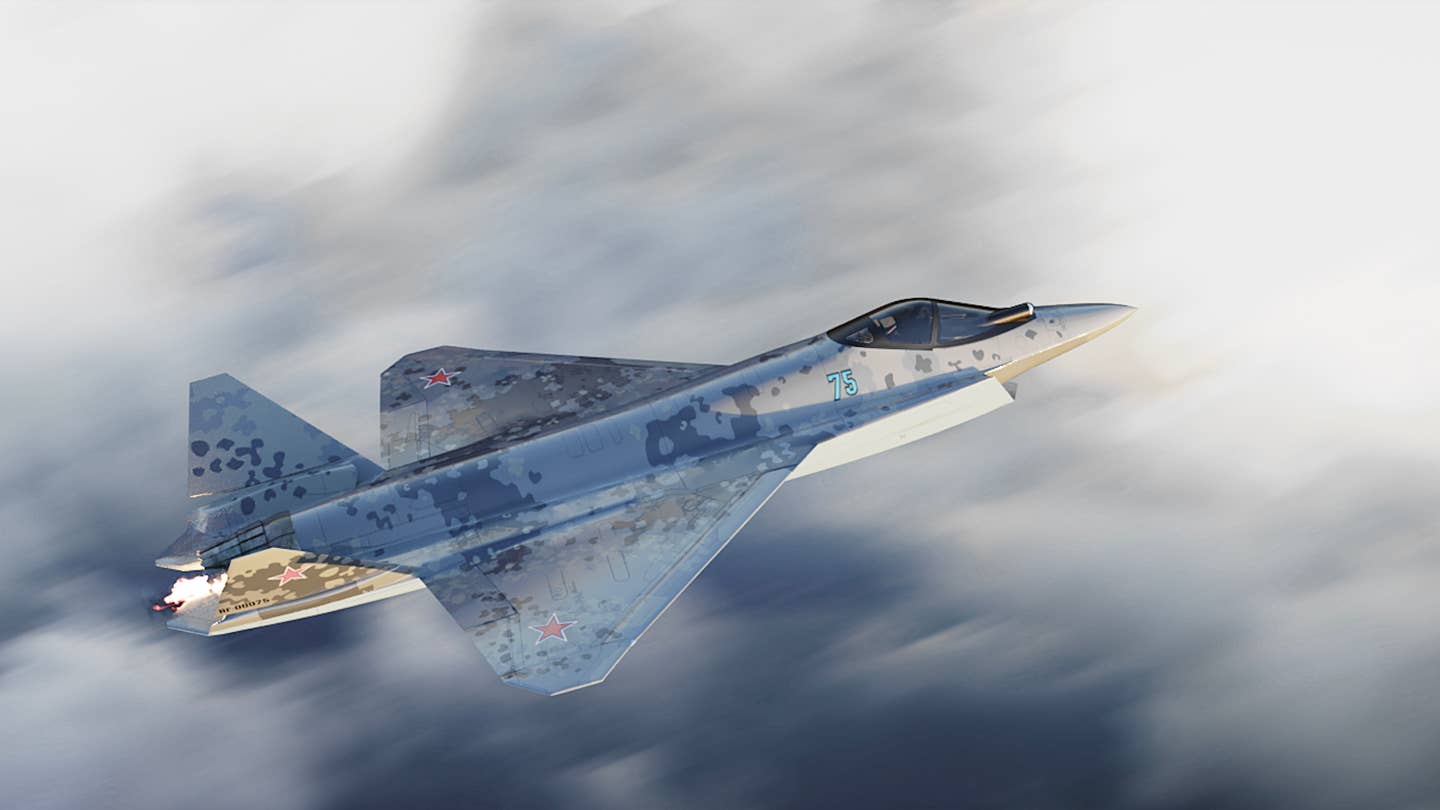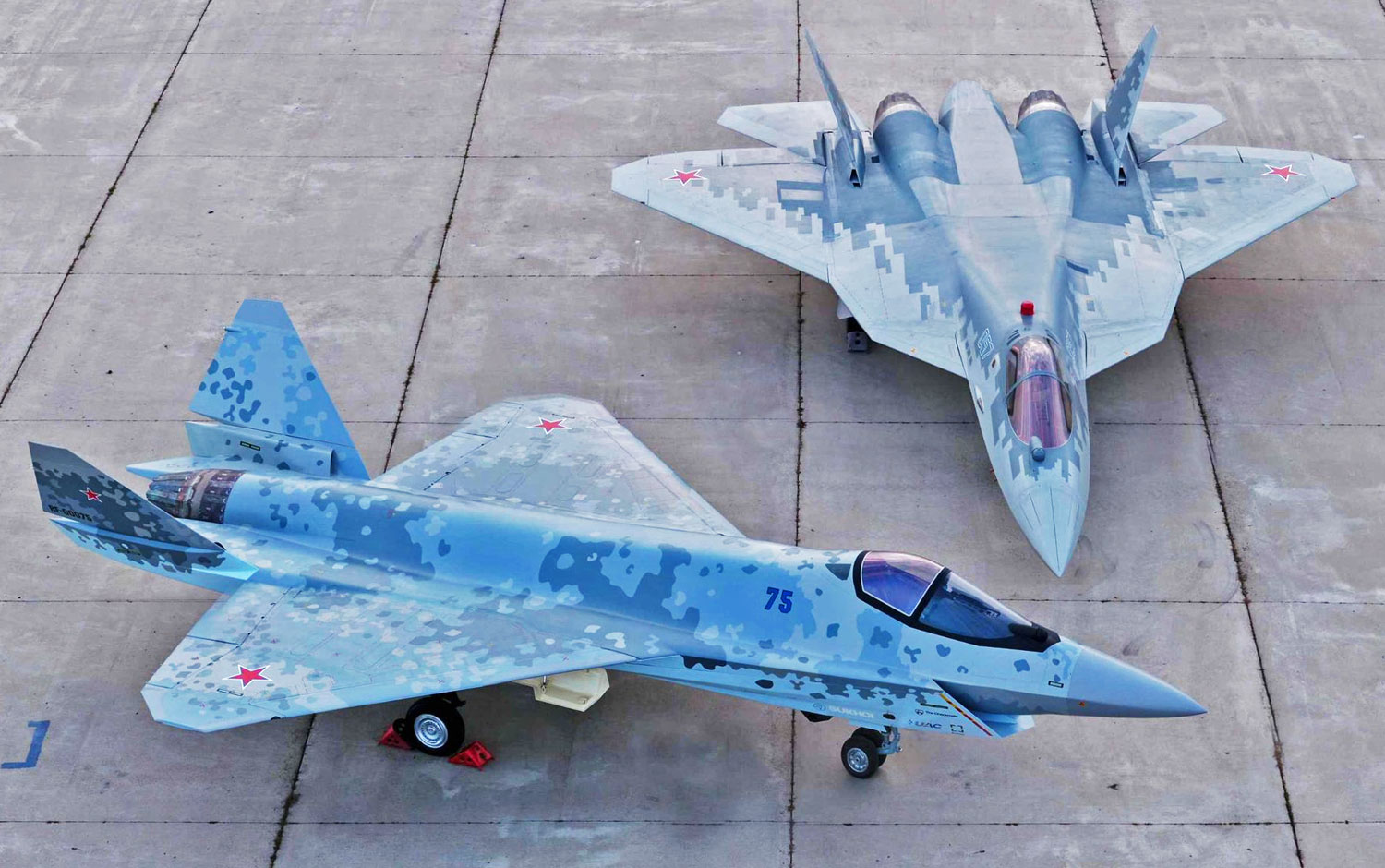Russia’s war in Ukraine looks to have severely impeded its aerospace industry, particularly its ambitious, single-engine, fifth-generation Su-75 Checkmate.
Experts have now underlined that Western sanctions have significantly restricted Russia’s ability to procure and manufacture the necessary components to build the ‘fifth-gen’ aircraft.
Russia has shown great faith in the Su-75’s future and declared that the aircraft’s first test flight could materialize in 2024. However, the Checkmate has not progressed past the models and computer-generated graphics.
The current conflict in Ukraine may last until 2023. Many Western pundits noted that this could make it challenging for the Russian aerospace sector to move the project forward smoothly.
When the Checkmate was first presented at the MAKS 2021 international airshow, it was pitched as a way for the nation’s combat aircraft industry to carve out a niche in the export market.
The aircraft’s name comes from the term “Checkmate,” which alludes to the chess movement that finishes the game by trapping the king.

The Russian aerospace industry wants to undermine sales of rival aircraft developed by other countries, including the Swedish JAS-39E/F Gripen and the Lockheed Martin F-35, by providing a less expensive Russian-made alternative.
Performance-wise, the aircraft would carry 7.4 tons of payload at a top speed of Mach 1.8 and a combat range of 1,700 kilometers without using extra fuel tanks. It was also reported that the new aircraft could maneuver at 8g.
The Su-75 fifth-generation aircraft has an internal weapons bay that stores missiles, like other stealthy jets. The aircraft will be outfitted with the same air-launched weapons used by the Su-35 and Su-57, according to information plaques in MAKS 2021.
Additionally, the design team claimed that the aircraft has a high wing lift efficiency. The V-shaped vertical tail, which contributes to the aircraft’s reduced RCS, has also received special notice.
Impact Of The Western Sanctions
The invasion of Ukraine caused the US and its allies to impose heavy sanctions on Russia. Due to this, it became conceivable that Moscow could not produce or obtain the essential components for the program.
Maya Carlin, a defense analyst, stated in her article that Russia’s capacity to obtain essential items, such as precision machining machinery and semiconductors, has been hampered. These items are necessary for the advanced avionics system’s effective functioning.
According to Carlin, this will impact future sales and the manufacturing of an airworthy Su-75, which is currently anticipated to fly in 2024. If Russia has trouble ensuring parts and maintenance, it may dissuade potential buyers.
Examining the wreckage of Russian missiles, drones, and even tanks that have been shot down in Ukraine has shown that they contain Western subsystems that are no longer permitted to be supplied to Russia.
Even in the past, American sanctions have had a significant influence on Russia’s defense industry. Counter America’s Adversaries Through Sanctions Act (CAATSA), passed before the Russian invasion of Ukraine, significantly discouraged different countries from procuring Russian weapons.

Many countries have already terminated plans to purchase Russian weapons to avoid US sanctions. Egypt, Algeria, and Indonesia are notable cases of canceled purchases of the Su-35 warplane.
The timeline for the development of Checkmate has already been impacted by the sanctions that Russia is currently facing. Sergey Chemezov, the chief of Rostec, had notified Russian President Vladimir Putin during a meeting on May 18 that the Su-75 Checkmate advanced fighter will begin production in 2027 rather than 2025, as had been anticipated.
Besides concerns about the manufacturing and export potential of Russian weapons, there is also a major question about the performance of Russian aircraft in Ukraine. Despite having a clear advantage against the Ukrainian Air Force, Moscow has been unable to achieve any air dominance in Ukraine.
The loss of advanced aircraft like the Su-35 in Ukraine could cause governments to be wary of investing in brand-new aircraft like Checkmate.
Prospects For Collaboration With Other Countries?
Russia’s most advanced fighter aircraft, Su-57, has only one customer, the Russian Aerospace Forces (VKS), and has only been produced in small numbers and at a significantly higher price than projected.
Furthermore, India’s decision to suspend financing the program also hindered the development process of the Su-57 aircraft. To prevent a repeat of such a situation, Russia approached the UAE in 2017 with a proposal for collaboration on the Su-75’s development.
At the Dubai Air Show in November 2017, a contract outlining the two countries’ cost-sharing for the program was scheduled to be inked. However, the UAE’s plans to fund the program were reportedly abandoned due to US pressure.
However, a promotional video demonstrates that Russia is still confident about exporting the jet to the Gulf state. The video begins with a pilot in the UAE gathering up his flying gear after getting a scramble notice on his smartphone.
Pilots in three nations that the Russians consider to be their most immediate clients—India, Vietnam, and Argentina—are also reportedly shown in the video. Some experts believe that these nations would consider buying the Checkmate, which costs about US $25–$30 million each.
According to experts, governments within the Russian sphere of influence might still buy Russian weapons, irrespective of sanctions. But if the Su-75’s development is delayed, foreign customers might go elsewhere for their requirements delivering a significant financial blow to Moscow.
- Contact the author at ashishmichel@gmail.com
- Follow EurAsian Times on Google News




